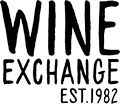To all Wine Exchangers,There are lots of ways to create interest in a wine, perhaps as a vanguard for a genre or vintage, or maybe the recipient of some seductive review, or as a sensational performer for a particular price point. Ultimately, though, the only reason to buy a wine is because it tastes good. Everything else is just rhetoric. The ‘pitch’ here is value, of course, as this wine performs remarkably for what it (now) costs. But there are reasons for that. Part of it is importer Eric Solomon. We can’t think of more than one or two in the wine business that have even come close to introducing more striking price/quality efforts than Eric. Lafage, Las Rocas, Castaño, his list of successes is long and, as value-priced wine goes, virtually unmatched. This one is a relative newcomer to the Solomon portfolio, and one that fits the profile of over-delivering while showing a sense of place that has been the key component of Eric’s program. The issue here is the location which is both positive and something of an issue. This wine comes from Penedès, a warm, sunny place where grapes do extremely well. For the most part, the area is known for its sparkling cava, the wines from the Torres family and, on occasion, a nicely proportioned, ample red. Of which the Can Rafols dels Caus Terraprima Massis del Garraf 2010 falls into the last category. The Garraf Massif is a mountain range located just south of Barcelona along the Mediterranean coast between the towns Castelldefels and Sitges. Rocky and calcareous, the region is sparsely wooded, carpeted in wild herbs and centered around the Parc Natural Garraf. In this stony, rugged landscape, Carlos Esteva took a dilapidated family estate and turned it into one of the most dynamic properties in Penedès. Starting in 1979, Carlos began to restore his grandfather’s house and replant many of the vineyards and orchards. The estate now totals 90 hectares of vineyards that have been organic since 2008, and has recently begun to work some plots biodynamically. The rugged, inhospitable landscape presents many varying microclimates which Carlos has taken advantage of by planting over 28 different grape varieties. The largest vineyard is only 2ha (about 5 acres).
The soils around Can Rafols dels Caus are comprised of decomposed dolomitic limestone with inclusions of ancient stones and fossils. The soil is shallow, free draining and poor in nutrients so even young vines are forced to root deep into the limestone bedrock. With its combination of proximity to the Mediterranean and elevation, Can Rafols enjoys plenty of warmth and sunshine as well as afternoon winds that moderate the heat and humidity. Their Terraprima wines come from a vineyard site adjacent to Can Rafols that Carlos purchased in 2004 to prevent it from becoming a quarry for cement production. Many of the vines on this 40-hectare plot are well over 50 years old. In this case, we aren’t going to flash a bunch of scores for this saucy red. We don’t have any, though we found all kinds of good marks for both whites and reds around this time frame, but not the 2010 red specifically (though the 2011, from a lesser vintage, nabbed 90 points from Vinous). That may have had a hand in the eventual price we paid for this $16 ‘list’ wine. It could also be a result of the current ‘unusual’ relationship between the importer and one of their distributors (you might recall the lovely little ‘blowout’ we did with Louro and La Peira a few weeks back). The blend here, from the clay and limestone soils, is a quirky cuvee of Cabernet Franc (55%), Grenache (30%), and Syrah (15%), but it really works. Unusual blends are not so unusual in a free form place like Penedes. This wine was presented to us with no fanfare, just as a surprisingly good wine for the proposed price point. In our mind, it was more than just a ‘deal’. The Terra Prima is a cool, compelling customer considering it comes from Spain, with plenty of fruit, amplitude, sneaky length, but also the purposeful reticence that we see from Loire Valley Cabernet Franc. It’s a wicked-good Chinon-Rhone mash-up at a ridiculous price. Bottom line? No scores and a delicious, engaging, and versatile red with a long, funny name adds up to a deal on a performer like few we have seen this year. We bought all they had because it tastes great, it’s in a style that plays with all manner of foods, and we can sell it for less than we would have paid for it before. This is a tasty deal at its original fare, but a silly, cuisine-versatile house red at under $10. Only 40 cases.
Kyle Meyer and Tristen Beamon, Proprietors, Wine Exchange |

|
 |
 |
Can Rafols dels Caus Terraprima Massis del Garraf 2010
The blend here, from the clay and limestone soils, is a quirky cuvee of Cabernet Franc (55%), Grenache (30%), and Syrah (15%), but it really works. Unusual blends are not so unusual in a free form place like Penedes. This wine was presented to us with no fanfare, just as a surprisingly good wine for the proposed price point. In our mind, it was more than just a ‘deal’. The Terra Prima is a cool, compelling customer considering it comes from Spain, with plenty of fruit, amplitude, sneaky length, but also the purposeful reticence that we see from Loire Valley Cabernet Franc. It’s a wicked-good Chinon-Rhone mash-up at a ridiculous price.
|



